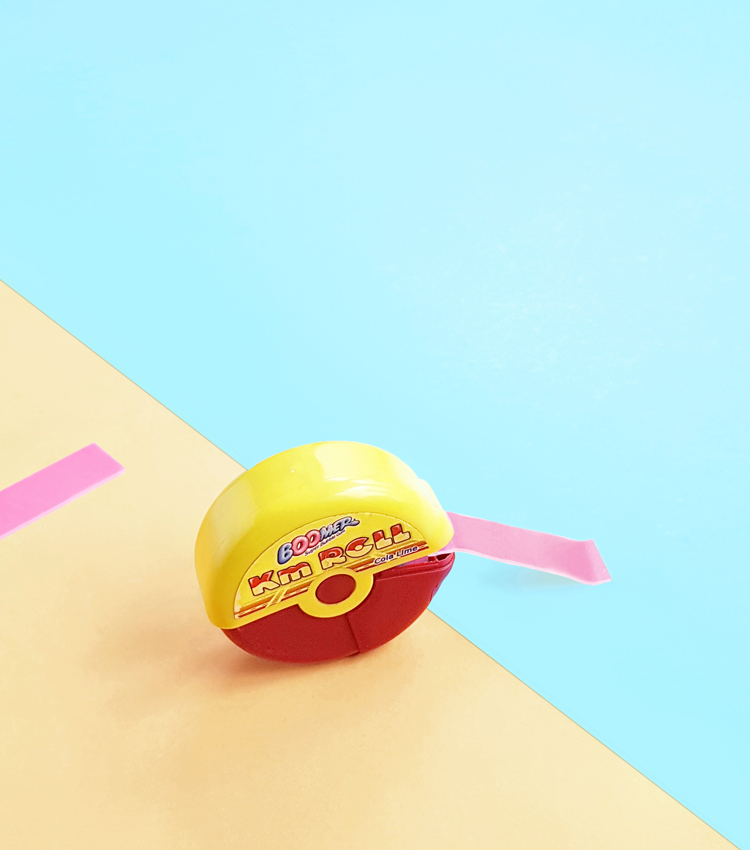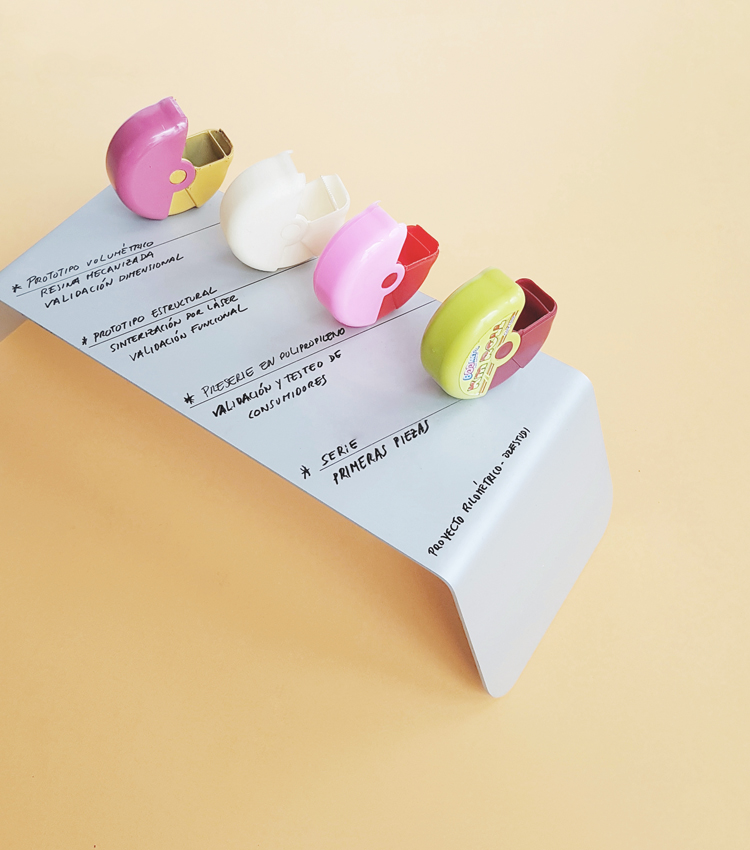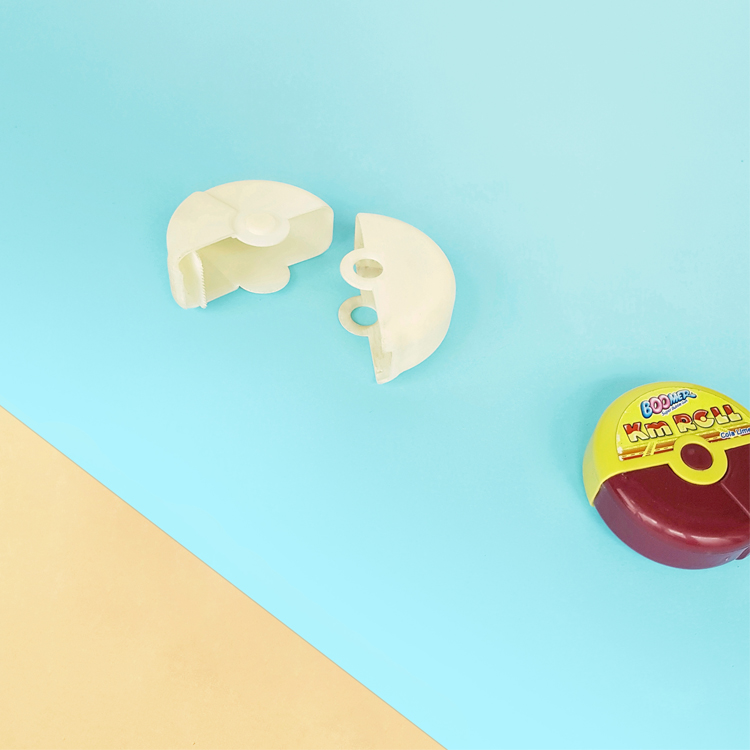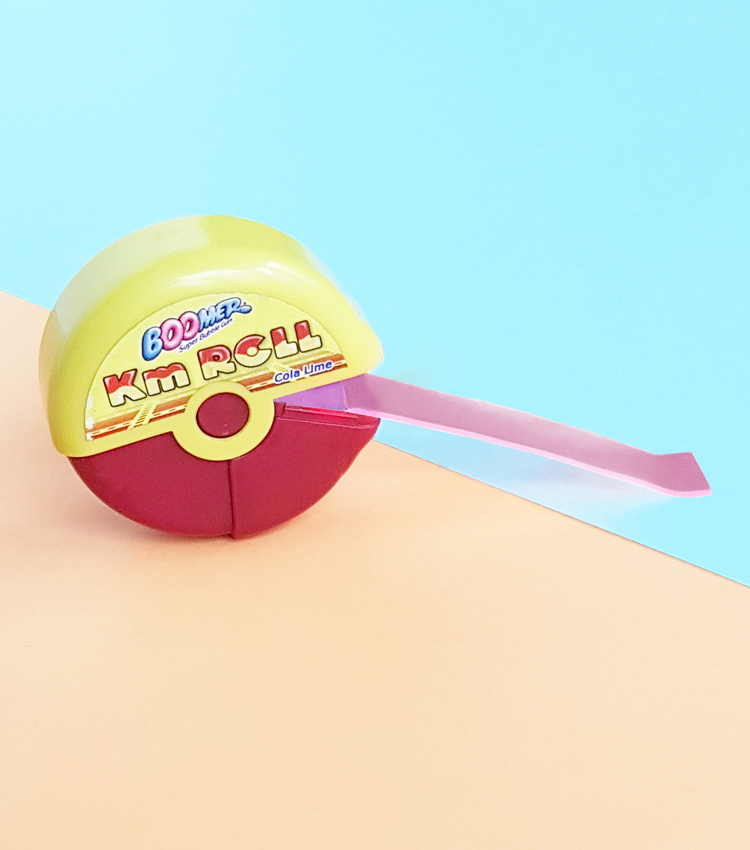Dispenser container · Boomer
Boomer Km Roll dispenser container.
When we are asked what creativity applied to design is, we always use as an example this practical case of industrial design carried out by the studio at the beginning of the century.
Originally, Boomer’s kilometer roll gum was packaged in a cylindrical box made up of two separate parts that snapped shut. It was very common that the lid fell to the ground during handling, getting dirty. The function of the container versus the product (and the particular format of the gum) was even not well communicated or structurally well resolved, and all the gum had to be removed from the box and manually cut into the desired portion, being then difficult to re-roll it and store it. It was difficult and unhygienic.
The container and the contents actually had little to do with it, only its circular shape. It was very logical because there had not been a comprehensive design process before.
Given the low efficiency of the container and its non-attractiveness at the time, they proposed us a comprehensive redesign. The briefing for the assignment was as simple as clear and devilish; design a product that would improve all the critical aspects of its predecessor, that would have intuitive dispensing and that would keep the gum in perfect conditions throughout the life of the product, achieving, furthermore, perfect operation. A design that also optimizes investments and that fit the established cost of the container –a total which could not exceed 0.018 Euros (3 pesetas at the time) labels included-.

This is creativity applied to design; be able to surprise even having -apparently- a narrow margin of work, and having many technical, physical, economic, and use restrictions (…). Achieve a totally coherent but unexpected solution at the same time.
It is not about designing what we as designers want; our work is based on designing what each client requires, what each product needs and what each user ideally expects.



The final result of the Km Roll is a container made of injected plastic. It is made up of two pieces that take advantage of the manufacturing process (angled faces concretely) to improve functionality. The pieces are joined by pressure on a central axis that tells about their manipulation (which is by turning). The system is closed by some tabs disposed at the opening area, were we also have a cutting area enabled. A solution that in a certain way evokes tape dispensers, which makes it easier for the user to understand, in addition to affecting hygiene since only the part of the gum that will be used is touched.
Possibly an obvious solution, but only now that you’ve already seen it.
